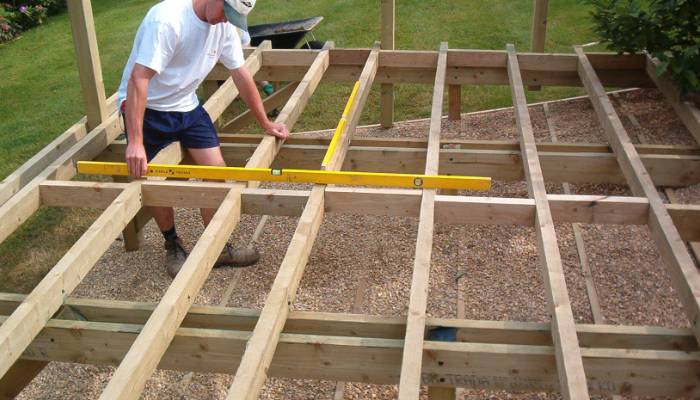Building a deck in Australia is more than just a backyard improvement project—it’s an investment in your property, lifestyle, and outdoor living space. From casual summer barbecues to cozy winter gatherings, a well-designed deck enhances both the aesthetic appeal and functional space of your home. As a manufacturer and supplier of high-quality decking materials in Australia, we often receive questions from homeowners, builders, and landscapers about the best methods to construct a durable, long-lasting deck. In this article, we will provide a comprehensive, step-by-step guide on how to build a deck in Australia, covering materials, planning, installation techniques, safety regulations, and maintenance tips.
Table of Contents
Understanding Decking Materials
Choosing the right material is the foundation of a successful deck. In Australia, decks are commonly constructed using either timber or composite materials. Each option has its advantages and disadvantages:
1.1 Timber Decking
Timber has been the traditional choice for decks in Australia for decades. It offers a natural, warm aesthetic and is relatively easy to work with.
Hardwood (e.g., Merbau, Spotted Gum, Blackbutt): Extremely durable and resistant to Australian weather conditions. Hardwood decking is ideal for high-traffic areas, but it requires periodic maintenance such as oiling or sealing to prevent weathering and color fading.
Softwood (e.g., Pine, Radiata Pine): Generally more affordable and lightweight. Softwood decking often requires pressure treatment to resist rot, insects, and decay. Softwood is easier to cut and shape, making it suitable for DIY projects, but it may not last as long as hardwood under harsh weather conditions.
1.2 Composite Decking
Composite decking is increasingly popular in Australia due to its low maintenance and longevity. Made from a combination of wood fibers and recycled plastics, composite boards mimic the appearance of timber while resisting warping, splitting, and fading.
Pros: Low maintenance, termite-resistant, long lifespan, eco-friendly options.
Cons: Higher upfront cost compared to timber, may become hot under direct sunlight, slight color fading over many years.
As a manufacturer, we recommend composite decking for clients who want a durable, hassle-free deck with minimal upkeep. Timber is still preferred by those who value natural aesthetics and are willing to perform regular maintenance.
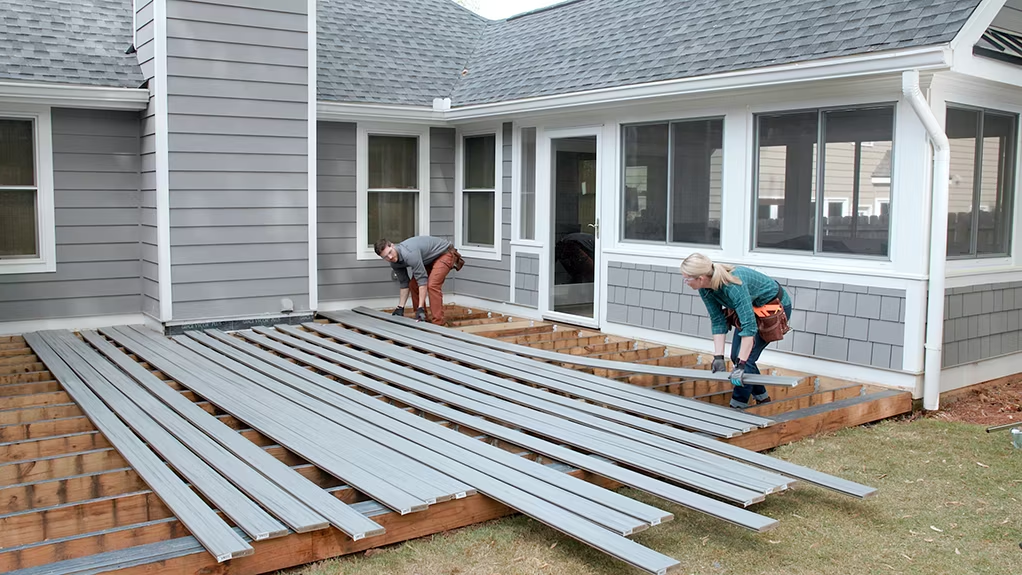
Planning Your Deck
Proper planning is essential before any physical construction begins. A well-planned deck not only meets your functional needs but also complies with Australian building regulations.
2.1 Determine the Purpose and Size
Ask yourself:
Will the deck be used for entertaining, relaxing, or both?
How many people will regularly use the deck?
Should the deck integrate with existing outdoor spaces like a pool, garden, or patio?
Once you answer these questions, you can determine the deck’s dimensions. Standard deck heights in Australia are usually between 300mm and 600mm above ground for low-level decks, while elevated decks require additional structural support and compliance with building codes.
2.2 Local Council Regulations
In Australia, building a deck often requires approval from your local council. Regulations vary by state and territory, but common requirements include:
Maximum deck height
Distance from property boundaries
Structural integrity and safety measures (e.g., balustrades, handrails)
Waterproofing if near other structures
Always consult your local council before ordering materials or beginning construction. Non-compliance can result in fines or forced modifications.
2.3 Budget Considerations
Costs vary depending on:
Material choice: Hardwood vs. softwood vs. composite
Deck size and complexity
Accessories: balustrades, lighting, built-in seating, pergolas
As a decking manufacturer, we advise clients to include 10–15% contingency in their budget for unforeseen expenses such as additional fixings, structural supports, or finishing materials.
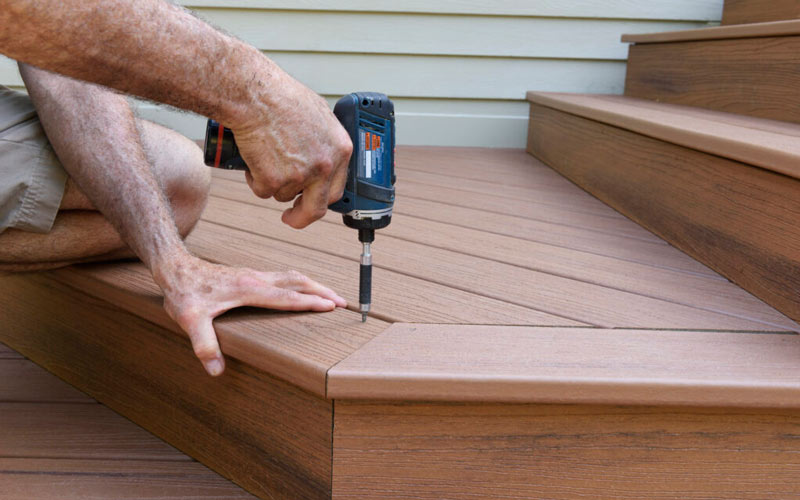
Tools and Hardware Required
A professional-grade deck requires quality tools and fixings. Essential tools include:
Circular saw or jigsaw
Drill and driver bits
Spirit level
Measuring tape
Hammer or nail gun
Clamps
Post hole digger (for elevated decks)
For hardware, high-quality screws, nails, brackets, joist hangers, and balustrade fittings are critical for durability. Stainless steel or coated fasteners are recommended to prevent rust and corrosion in Australian weather conditions.
Preparing the Site
Site preparation is a crucial step for deck longevity.
4.1 Clearing and Leveling
Remove any existing vegetation, rocks, or debris.
Level the ground, or ensure a slight slope for drainage. Poor drainage can cause timber rot or composite warping.
4.2 Footings and Posts
For elevated decks, concrete footings are necessary to anchor posts. Depth and diameter depend on deck height and soil type. In Australia, frost depth is generally not a concern, but coastal areas may require deeper footings due to sandy soil and wind load.
Use post brackets or galvanized hardware to secure posts.
Ensure posts are plumb using a spirit level.
Frame Construction
The deck frame provides the structural support for the decking boards.
5.1 Joist Spacing
Timber decks: 450–600mm apart depending on board thickness.
Composite decks: 300–450mm apart due to higher flexibility of composite boards.
5.2 Fixing Joists
Secure joists to beams using galvanized joist hangers or screws.
Ensure the frame is square by measuring diagonals.
Consider using blocking between joists for added stability, especially for wider decks.
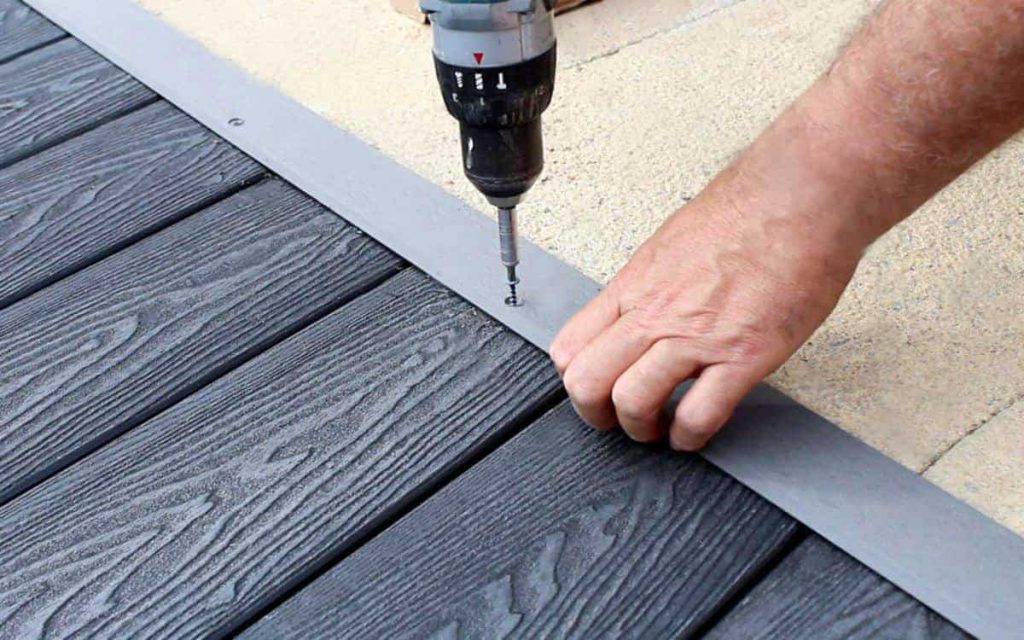
Installing Deck Boards
Once the frame is ready, deck boards can be installed.
6.1 Timber Deck Boards
Lay boards perpendicular to joists.
Leave a small gap (3–5mm) between boards for drainage and expansion.
Fasten with corrosion-resistant screws or hidden fasteners.
6.2 Composite Deck Boards
Follow manufacturer’s guidelines for expansion gaps (usually 5–8mm).
Use specialized clips or screws designed for composite decking.
Avoid over-tightening fasteners, which may damage the boards.
6.3 Cutting and Edging
Cut boards to length using a circular saw with a fine-tooth blade.
Consider adding fascia boards around the perimeter for a polished finish.
Rounded edges can prevent splintering for timber decks.

Adding Railings and Balustrades
Safety is paramount, especially for elevated decks. Australian standards (AS 1657 and AS 1170) specify:
Minimum balustrade height: 1.0m for decks over 1m high
Maximum gap between balusters: 125mm
Secure handrails for stairs and elevated areas
Materials for balustrades can include timber, glass, stainless steel cables, or powder-coated aluminum. Glass balustrades offer a modern look while maintaining safety, while timber or metal railings complement traditional deck designs.
Deck Finishing and Maintenance
A properly finished deck can last decades with minimal upkeep.
8.1 Timber Deck Maintenance
Apply a weatherproofing oil or sealant at least once a year.
Clean with a soft-bristle brush and mild detergent.
Inspect for splinters, loose boards, and rot.
8.2 Composite Deck Maintenance
Wash with soap and water to remove dirt and debris.
Avoid abrasive cleaners that may scratch the surface.
Minor scratches can often be sanded lightly or covered with matching filler.
8.3 Additional Features
Lighting: LED strip lights along the steps or perimeter enhance safety and ambiance.
Pergolas or shade structures: Protect decks from harsh sun and rain.
Furniture and planters: Ensure adequate drainage to prevent water pooling.
Common Challenges and How to Overcome Them
Even professional deck installations encounter challenges that can affect durability, safety, and aesthetics. Common issues include:
Uneven Ground: Use adjustable post brackets or shimming techniques to level elevated decks. Proper site preparation and soil compaction before installation can prevent long-term settling.
Weather Damage: Pre-treat timber with water-repellent sealants and choose UV-resistant composite boards. Regular cleaning and protective coatings help prevent cracking, warping, or fading caused by Australian sun and rain.
Incorrect Joist Spacing: Follow manufacturer specifications for board type to prevent sagging or bouncing. Over-spaced joists can compromise structural integrity, while too-close spacing increases material costs unnecessarily.
Improper Fasteners: Always use corrosion-resistant screws or hidden fasteners to prevent rust, splitting, and deck failure. Stainless steel or coated screws are ideal for coastal or humid environments.
Poor Drainage: Standing water can lead to rot, mold, or algae growth. Ensure a slight slope for water runoff and leave appropriate gaps between boards.
Pest Infestation: Timber decks are vulnerable to termites and wood-boring insects. Treat wood with insecticides and consider termite-resistant hardwoods.
Expansion and Contraction: Composite and timber boards expand and contract with temperature changes. Always leave adequate gaps and avoid over-tightening fasteners to prevent buckling or warping.
Improper Maintenance: Neglecting routine inspections and cleaning can reduce deck lifespan. Establish a regular maintenance schedule for staining, sealing, and fastener checks.
By anticipating these challenges and using professional-grade materials and installation techniques, you can ensure your deck remains safe, beautiful, and durable for many years.
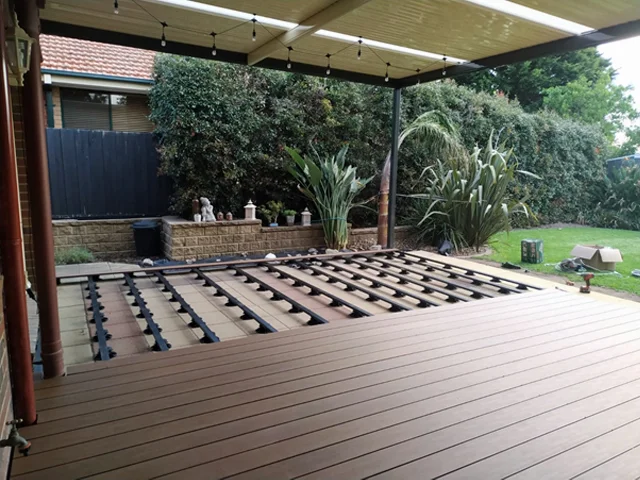
Hiring Professionals vs. DIY
While many homeowners attempt DIY deck construction, hiring professional deck builders or consulting manufacturers offers distinct advantages:
Compliance with Australian building codes
Expert structural calculations
Time efficiency and fewer mistakes
Access to professional-grade tools and materials
However, DIY projects are possible for low-level decks using pre-cut materials and manufacturer guidelines. We provide detailed installation manuals and technical support for all our decking products to assist DIY enthusiasts.
Cost Breakdown
A rough guide to deck costs in Australia (as of 2025):
| Deck Type | Material Cost per m² | Average Installation Cost per m² |
|---|---|---|
| Softwood Timber | AUD 80–120 | AUD 150–200 |
| Hardwood Timber | AUD 120–180 | AUD 200–250 |
| Composite Decking | AUD 150–250 | AUD 250–300 |
Costs vary based on size, complexity, and region. Accessories like balustrades, lighting, and pergolas will increase the total investment.
Conclusion
Building a deck in Australia is an investment in your home’s value, aesthetics, and outdoor lifestyle. Whether you choose timber for a natural, classic look or composite materials for durability and low maintenance, careful planning and professional-grade construction are key to long-lasting results. By following local building regulations, selecting quality materials, and considering long-term maintenance, homeowners can enjoy a beautiful, functional deck for years to come.
As a leading decking manufacturer, Hosung supply premium timber and composite decking materials, along with installation guides and technical support. For more information on building your ideal deck, explore our range of products and consult our experts to ensure your project meets both your vision and Australian standards.

